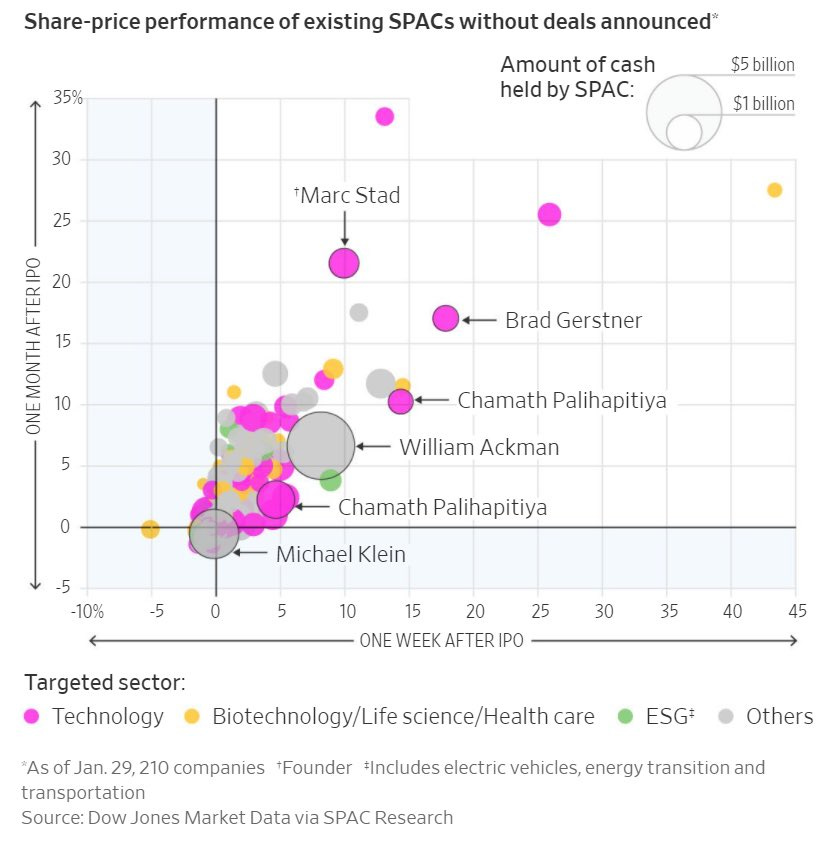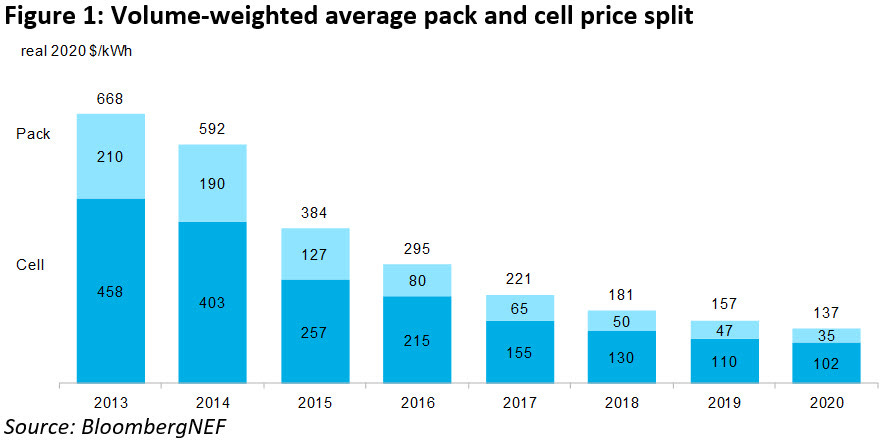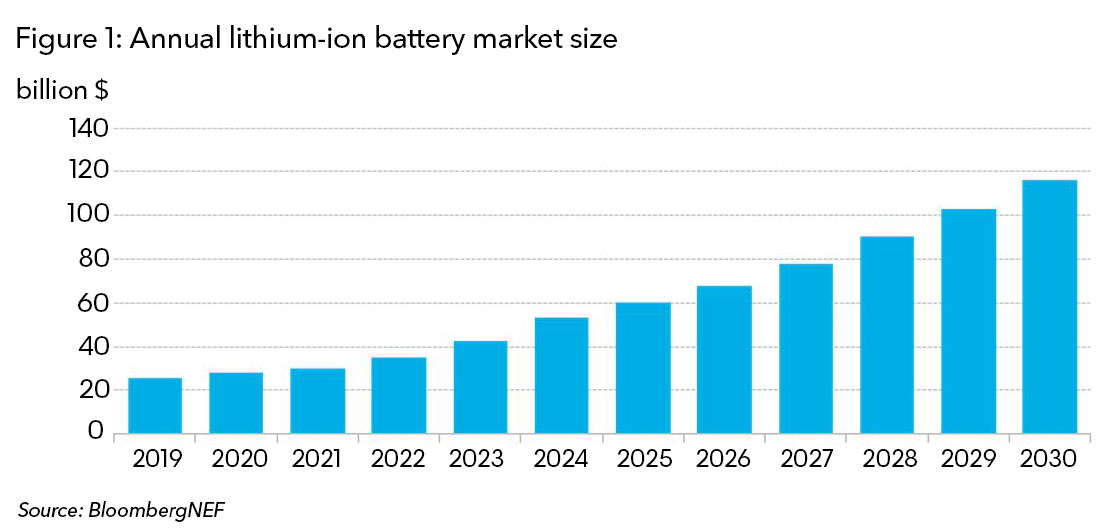Welcome to new subscribers. To those just joining us, Trajectory explores where the world is heading and the trends determining our future, delivered straight to your inbox. To learn more about the editor Mikal - click here.
The High-Level This Week: Clean energy has been a buzzword for years, yet despite the interest has made very little progress in the real world. Almost all our energy is produced by fossil fuels, almost all our cars run on fossil fuels and global production of fossil fuels continue to climb. But the shackles that have held back clean energy have finally been released in 2020, and the green revolution can now finally begin.
Read on and share your thoughts in the comments below!
This Week in Data
The SPAC wave has been a remarkable shift in the US public markets over the last two years. For a variety of reasons it is a very interesting trend. But most notably it clearly illustrates that reputation matters in investing. Immensely.
Intellectual Sparks
The Next Commodity SuperCycle: 2020 sparked the beginning of a new commodity supercycle, stimulated in large part by the clean energy industry
Small increases in air pollution linked to rise in depression
We read the paper that forced Timnit Gebru out of Google. Here’s what it says.
Sperm Count Zero: Modern life - the combination of indoor time, chemical exposure and more - is driving infertility in humans, particulary men
In Pictures: Etna’s spectacular new eruption: Europe’s most active volcano erupts again
Editor’s Letter: Going Green, Finally
2020 was a tipping point for clean energy globally. Amid the chaotic news cycle of the pandemic, this fact was mostly lost. Decades of research, investment and advancement culminated in 2020 to decisively change the economics of clean energy and start what will be a decades-long effort to redesign and rebuild our energy infrastructure globally.
Every aspect of the energy industry - from energy generation, energy storage, regulation and economic incentives - have all reached the point where clean energy is now a feasible alternative to traditional carbon-intensive energy generation (coal, oil and gas).
Source: IEA
Energy Generation
For decades now several options have existed to generate clean energy - solar, wind, geothermal and others. However, these technologies have all been handicapped by being far more expensive than traditional approaches. Despite decades of investment and research, costs per kilowatt hour (KWH) have remained stubbornly high. Despite generous global subsidies, the high unit cost of generating electricity through these technologies has constrained their deployment - particularly globally, where emerging markets governments cannot afford the generous subsidy programs of the Western World.
In 2020, this economic logic finally shifted for solar energy - the most popular of the clean energy technologies. Last year, the International Energy Association (IEA) declared that the latest generation of solar technology is the cheapest form of energy generation in human history.
The incredible advance in solar technology cannot be understated. In 1976 the cost of a photovoltaic module (a solar panel) cost $106 per watt of energy produced in today’s dollars. Today, a photovoltaic module costs $0.38 per watt. This is an extraordinary drop of 99.6% in costs in a four-decade period.
Today, investing in solar energy powerplants is the most economically logical choice, irrespective of whether you are a wealthy developed country or a more resource-constrained emerging market country.
Source: Our World in Data
Energy Storage
Another historical challenge for clean energy adoption has been the requirement for grid storage. Clean energy - unlike coal or oil production - is very uneven. The sun shines for a few hours a day and it is more windy on some days than others. Because of this, there are times where the grid generates more energy than required and times it generates less. To bridge this gap, electric grids have to be redesigned to facilitate clean energy, with significant investment in grid storage required.
Grid storage - like clean energy - has been constrained by the high costs of the technology, in particular the high costs of batteries. The most advanced battery technology in use today is lithium-ion batteries. Lithium-ion batteries charge faster, last longer and have a higher power density than traditional batteries. They are also very expensive.
In 2010, lithium-ion battery packs cost over $1,100 per kilowatt-hour. By 2020, this had fallen to $137 per KWH, a drop of 89% in just one decade. By 2023, Bloomberg forecasts this will drop to about $100 per KWH. The dramatic drop in cost of lithium-ion batteries has changed the economics of grid storage technologies.
Grid storage is a critical enabler for clean energy. Without it, clean energy grids will always require oil or coal powerplants to offset production deficits when the sun isn’t shining or it isn’t a windy day. With cost-effective grid storage, a fully green grid is finally possible for the first time. The rapid reduction in lithium-ion costs is also driving the revolution in electric cars globally, helping make electric cars more affordable and efficient.
Regulations
The final piece that will drive a clean energy revolution over the next decades is regulation and subsidies by governments. Governments have three immensely powerful tools at their disposal to stimulate shifts to clean energy - procurement, taxes and subsidies.
One of President Biden’s first announcements was his administration’s intention to shift the entire Federal Government’s fleet to electric vehicles. Today, the US Federal Government has a fleet of 645,000 vehicles of which only 3,215 were electric in 2020. Using the price of mid-priced electric car like the Vauxhall Corsa-e, the cost of replacing the entire Federal Government vehicle fleet will be at least $25 billion. In comparison, Tesla’s total revenues for 2020 was $31 billion.
This represents a massive wave of demand flooding into the market for electric vehicle producers. This demand helps electric vehicle producers raise investment easier, helps them produce at larger volume which lowers unit costs and stimulates other economies of scale.
In addition to the procurement function, governments can use taxes and subsidies to motivate people to buy electric vehicles. Governments in Europe have led the way with these initiatives. For example, Argus Media noted:
In Germany, Any privately owned EVs registered until the end of 2020 will have a 10-year tax exemption and EVs with a sales price below €40,000 will qualify for a €9,000 subsidy until December 2021.
All EVs in France are subject to a tax exemption from CO2-related taxes. France has subsidies of up to €7,000 for households buying EVs below €45,000 and a scrappage scheme of up to €5,000 for households and €2,500 for individuals.
Spain has reduced tax by 75pc for EVs in big cities like Madrid and Barcelona, and a scheme which subsidises the purchase of EVs by €4,000-5,000 depending on if a vehicle seven years or older is scrapped.
In Italy, EVs are tax exempt for five years from registration and get a 75pc reduction in tax after that. Italy also has a bonus-malus scheme, where vehicles are subsidised up to €6,000 per car emitting less than 70g of CO2/km, but penalised by €2,500 per car if they emit above 250g of CO2/km
Aside from vehicles, energy production globally benefits from many subsidies and tax breaks. Reducing subsidies for carbon-intensive production and increasing support for clean energy production can further accelerate clean energy deployment. For example, the US fossil fuel industry benefits from 5 direct and 4 indirect subsidy programs. Similarly, the US also has a long and generous history of clean energy subsidies.
The combination of government procurement, taxes and subsidies will bring significant demand into the market for clean energy and stimulate investment and adoption worldwide. The incredible technological advances in solar technology and battery technology have altered the economic logic of clean energy once and for all. Now begins the decades-long effort to shift resources and investment into clean energy, requiring electric grids to be rebuilt globally, charging stations to replace gas stations and turning solar panels into fashionable roofing. But the clean energy tipping point has finally reached.







